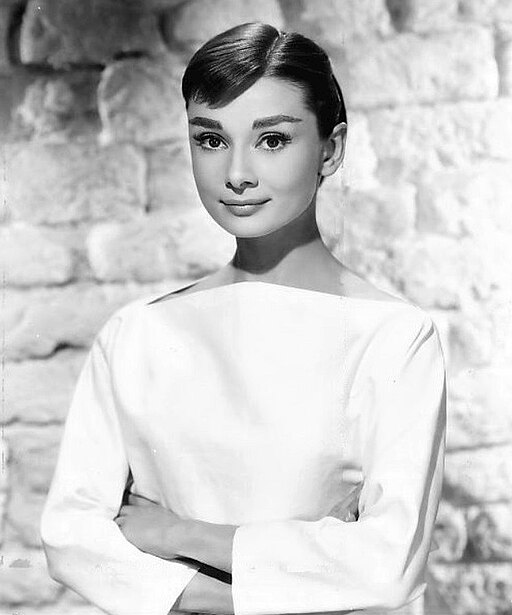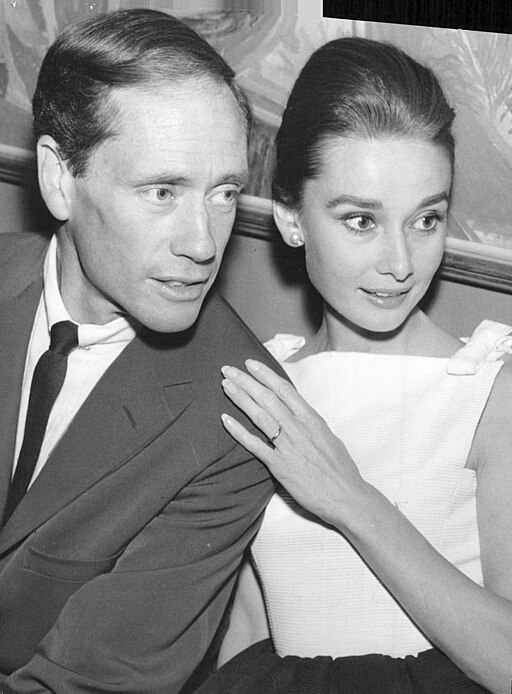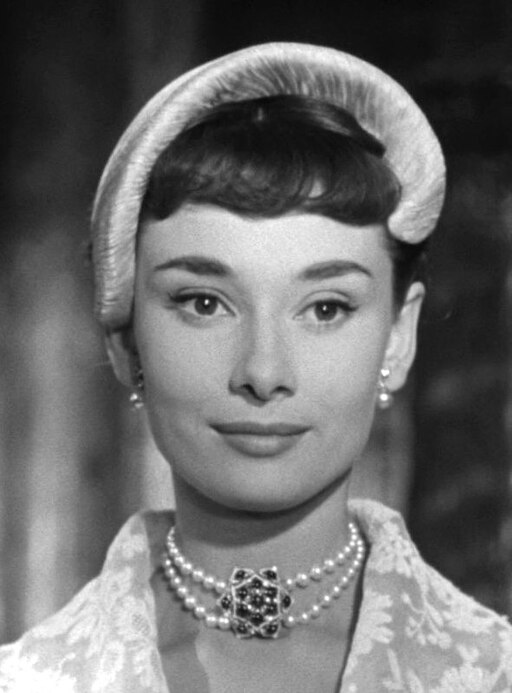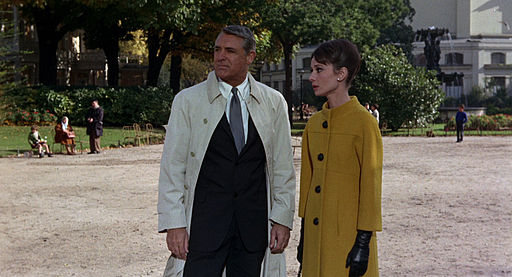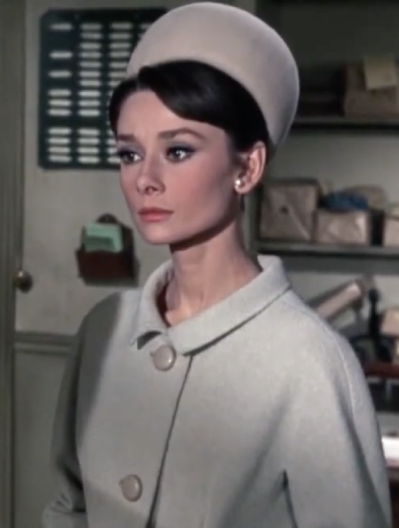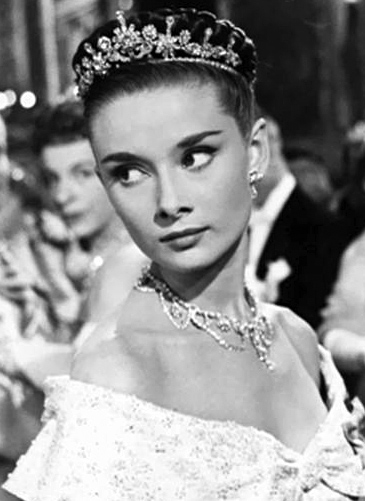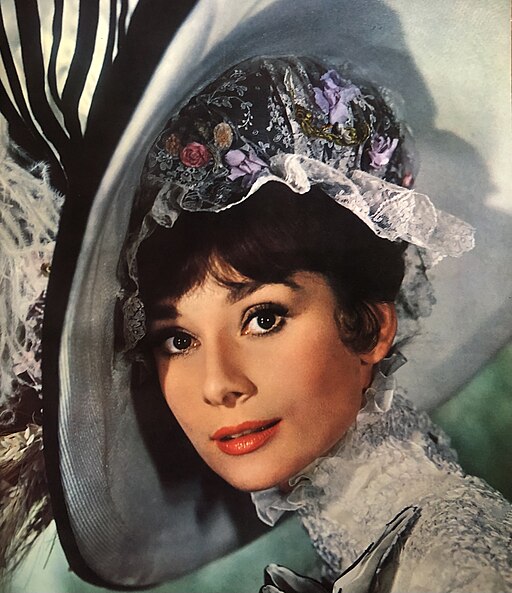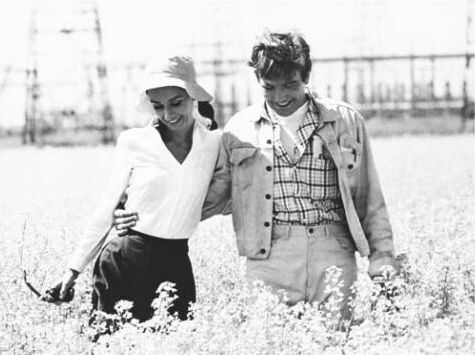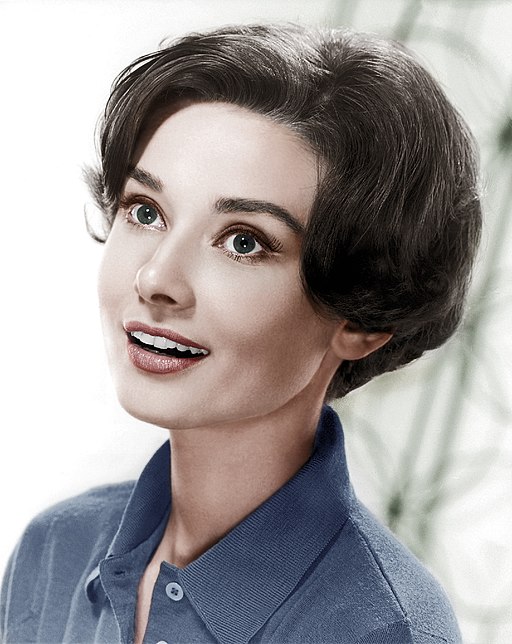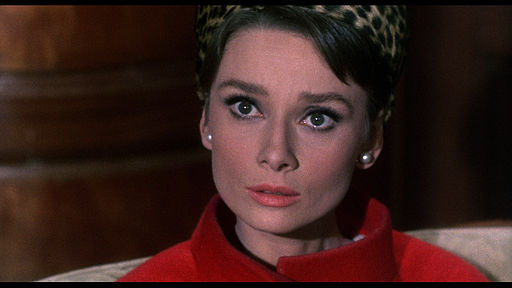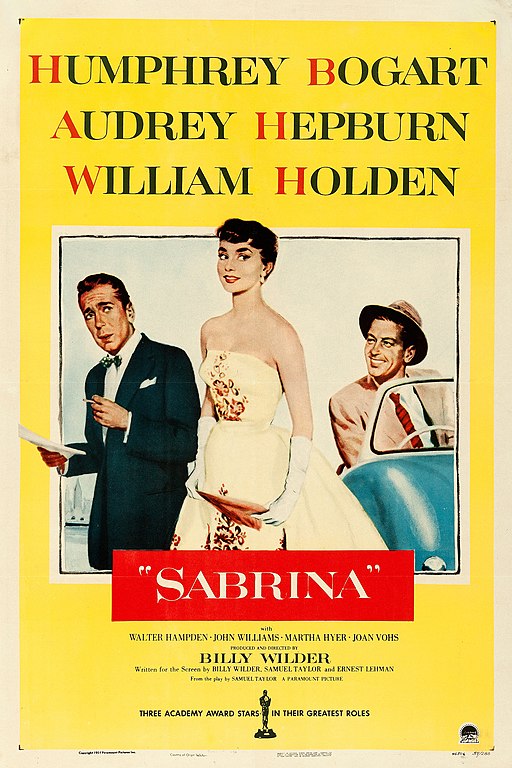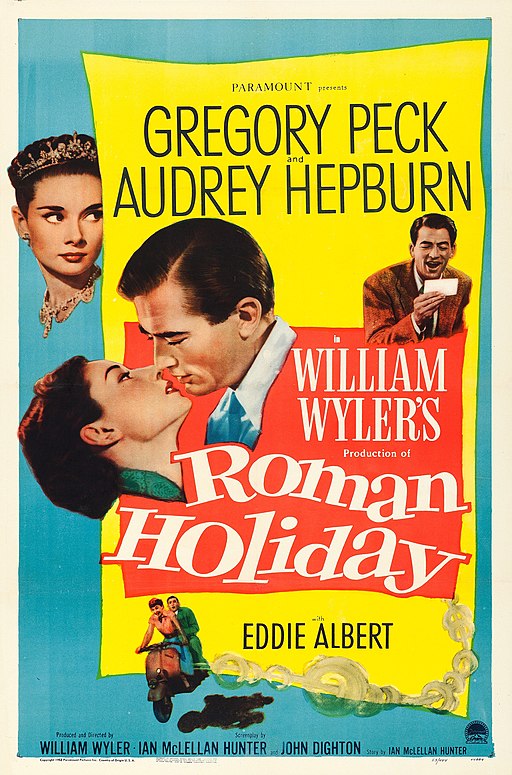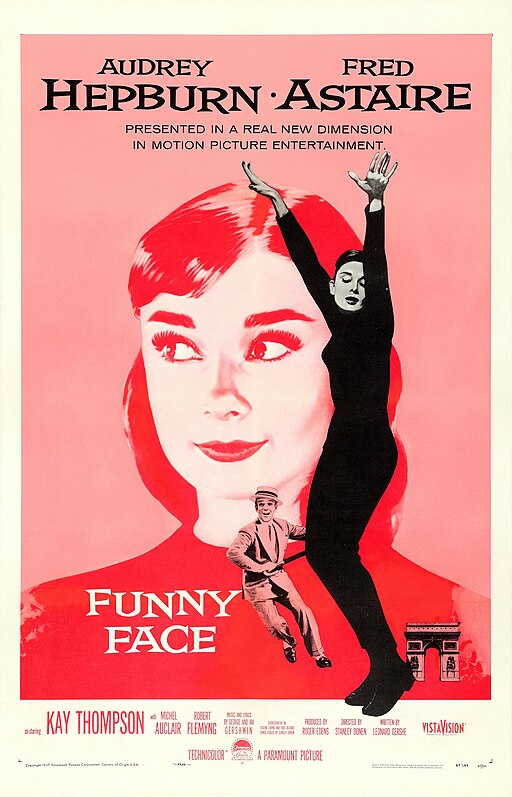Audrey Hepburn
back| Full Name | Audrey Kathleen Ruston |
| Stage Name | Audrey Hepburn |
| Born | May 4, 1929 |
| Birthplace | Ixelles, Brussels, Belgium |
| Died | January 20, 1993 |
| Buried | Tolochenaz Cemetery, Tolochenaz, Vaud, Switzerland |
| Married to | Mel Ferrer (1954–1968) - Andrea Dotti (1969–1982) |
| Children | Sean Hepburn Ferrer (with Mel Ferrer) - Luca Dotti (with Andrea Dotti) |
| Notable films | Roman Holiday (1953 ) - Sabrina (1954) - Breakfast at Tiffany's (1961) - My Fair Lady (1964) - Charade (1963) |
Audrey Hepburn
The Eternal Icon of Style
Audrey Hepburn was a celebrated actress and humanitarian. Rising to fame with her Oscar-winning role in "Roman Holiday" (1953), Hepburn became renowned for her elegant charm and graceful screen presence.
Her illustrious film career included iconic roles in "Sabrina," "Breakfast at Tiffany's," and "My Fair Lady." Known for her timeless style and sophistication, she became a fashion icon, influencing generations.
Related
Audrey Hepburn (1929 – 1993)
Biography and Overview of her Career
Audrey Hepburn was born Audrey Kathleen Ruston on May 4, 1929, in Ixelles, Brussels, Belgium. She was the daughter of Joseph Victor Anthony Ruston, a British businessman, and his second wife, Ella van Heemstra, a Dutch baroness. Hepburn's childhood was marked by her parents' divorce and the impact of World War II. During the war, she lived in the Netherlands, experiencing the hardships of the Nazi occupation, including malnutrition.
Hepburn's interest in ballet led her to pursue a career in dance, but her ambitions shifted towards acting. Her film debut was in the educational travel film "Dutch in Seven Lessons" (1948). However, her breakthrough came with the 1951 Broadway play "Gigi" and subsequently, her lead role in "Roman Holiday" (1953), for which she won an Academy Award for Best Actress.
Throughout the 1950s and 1960s, Hepburn starred in several successful films. Her most notable performances include "Sabrina" (1954), "Funny Face" (1957), "Breakfast at Tiffany's" (1961), "My Fair Lady" (1964), and "Charade" (1963). Known for her elegance and style, Hepburn became a fashion icon, closely associated with the designer Hubert de Givenchy.
Despite her successful film career, Hepburn chose to step back from acting in the late 1960s to focus on her family. She made occasional film and TV appearances in the following decades.
Hepburn's later life was dedicated to humanitarian work. She was appointed a Goodwill Ambassador of UNICEF in 1988. Her efforts to raise awareness about children in need took her to various parts of the world, including Africa, South America, and Asia.
Audrey Hepburn passed away on January 20, 1993, at her home in Switzerland after a battle with appendiceal cancer. She left behind a legacy as both a celebrated actress and a dedicated humanitarian. Her elegance, talent, and compassion continue to inspire people worldwide.
Top 10 Movies with Audrey Hepburn:
Audrey Hepburn’s Acting Style:
Audrey Hepburn's acting style was characterized by a unique blend of elegance, charm, and emotional depth, making her one of the most beloved and iconic actresses of her time. Here's a detailed analysis of her acting style:
- Effortless Elegance and Charm:
Hepburn brought an effortless grace to her roles. Her ballet training was evident in her poised and graceful movements, which lent a distinct elegance to her characters.
Her charm was natural and unforced, often shining through in her gentle smile and the twinkling expressiveness of her eyes. This charm made her characters endearing and relatable, even when they were sophisticated or worldly.
- Emotional Authenticity and Vulnerability:
Hepburn's performances were marked by a genuine emotional depth. She had an innate ability to convey complex emotions subtly and convincingly, often with just a glance or a slight change in expression.
Her vulnerability on screen was palpable, as seen in films like "Breakfast at Tiffany's" and "The Nun's Story." She portrayed fragility and strength simultaneously, making her characters multidimensional and real.
- Understated Acting Technique:
Hepburn favored a more understated acting style, avoiding over-dramatization. Her approach was more in line with the 'less is more' philosophy, where small gestures and minimalistic expressions conveyed much.
This subtlety made her performances timeless and appealing across generations, as they never felt overdone or tied to a specific era's acting conventions.
- Comic Timing and Light-Heartedness:
In her comedic roles, such as in "Roman Holiday" and "Funny Face," Hepburn displayed impeccable comic timing and a playful light-heartedness.
Her ability to balance humor with sincerity added a delightful charm to her comedic performances, making her characters both amusing and endearing.
- Versatility and Range:
Hepburn demonstrated a wide range in her acting, comfortably transitioning between different genres, from romantic comedies to dramas.
She could play a naive princess, a sophisticated socialite, or a struggling nun with equal conviction, showcasing her versatility as an actress.
- Iconic Style and Fashion Influence:
While not directly related to her acting technique, Hepburn's fashion sense and style greatly influenced her on-screen persona. She collaborated closely with designer Hubert de Givenchy, creating looks that became as iconic as her performances.
Her style, characterized by simplicity and elegance, complemented her acting, adding an additional layer of allure and charisma to her characters.
- Connection with the Audience:
Hepburn had a unique ability to connect with her audience, making them feel as if they were experiencing the emotions and journey of her characters alongside her.
Her on-screen presence was inviting and engaging, drawing viewers into the story and creating a lasting emotional impact.
In summary, Audrey Hepburn's acting style was a masterful blend of grace, emotional depth, subtlety, and versatility. Her performances were nuanced and genuine, characterized by an elegance that was as much a part of her persona as her acting skill. Hepburn's legacy in film is not only a collection of memorable characters but also a testament to an acting style that was both distinctive and universally appealing.
Memorable Quotes from Audrey Hepburn:
- On True Beauty:
"For beautiful eyes, look for the good in others; for beautiful lips, speak only words of kindness; and for poise, walk with the knowledge that you are never alone."
- On Success and Giving:
"As you grow older, you will discover that you have two hands, one for helping yourself, the other for helping others."
- On the Importance of Laughter:
"I believe that laughing is the best calorie burner. I believe in kissing, kissing a lot. I believe in being strong when everything seems to be going wrong."
- On Personal Strength:
"Nothing is impossible, the word itself says 'I'm possible'!"
- On Life's Challenges:
"I've been through a lot and I realize the future can’t be controlled. I'm not worried. You can always learn to overcome difficulties."
- On Happiness:
"The most important thing is to enjoy your life—to be happy—it's all that matters."
- On Love:
"The best thing to hold onto in life is each other."
- On Her Own Image:
"I don’t want to be alone, I want to be left alone."
- On Choices and Mistakes:
"I was born with an enormous need for affection, and a terrible need to give it. That's what I think has kept me going."
- On Empathy and Understanding:
"When you have nobody you can make a cup of tea for, when nobody needs you, that’s when I think life is over."
Audrey Hepburn as a Fashion Icon:
A] Her Sunglasses:
Audrey Hepburn's sunglasses, particularly the pair she wore in "Breakfast at Tiffany's" (1961), have become an iconic symbol of style and elegance. Here's what makes them so special:
The "Breakfast at Tiffany's" Sunglasses:
- In "Breakfast at Tiffany's," Hepburn's character, Holly Golightly, wears large, dark sunglasses that have since become emblematic of 1960s fashion. These sunglasses were designed by Oliver Goldsmith, a notable designer of eyewear.
- The specific model she wore is known as the "Manhattan" design. Their oversized, wayfarer-style shape with the thick, dark frames became instantly recognizable and synonymous with Hepburn's sophisticated style in the film.
Fashion Impact:
- The sunglasses contributed significantly to the film's fashion legacy and to Hepburn's status as a style icon. The bold yet elegant design complemented her character's unique blend of vulnerability and sophistication.
- They have inspired countless imitations and continue to influence fashion trends, illustrating the timeless nature of Hepburn's style.
Symbol of Elegance and Mystery:
- Beyond their fashion statement, the sunglasses added an element of mystery to Hepburn's character, shielding her emotions while adding to her allure. They became a symbol of elegance and an accessory that represented the chic and enigmatic nature of Holly Golightly.
Legacy in Popular Culture:
- Hepburn's sunglasses in "Breakfast at Tiffany's" have transcended their role as a mere fashion accessory to become an enduring cultural icon. They are often referenced in discussions of classic film fashion and are showcased in various exhibitions and retrospectives on Hepburn's career.
Influence on Eyewear Design:
- The popularity of these sunglasses helped popularize large, statement eyewear for women. The design has influenced eyewear trends over the decades and remains a sought-after style for its classic yet bold aesthetic.
B] Her Dresses:
Audrey Hepburn's dresses, particularly the iconic black dress from "Breakfast at Tiffany's," are emblematic of her timeless style and have left a significant mark on fashion history. Here's an overview of her most famous dress and her general style:
The "Breakfast at Tiffany's" Black Dress:
- Designer and Style: The black dress Hepburn wore in the opening scene of "Breakfast at Tiffany's" (1961) was designed by Hubert de Givenchy. This dress is often cited as one of the most iconic in film history. It was a long, black satin sheath gown, featuring a cut-out back, a thigh-high slit, and was adorned with a string of pearls.
- Fashion Impact: This dress exemplified the chic, sophisticated simplicity that became Hepburn's trademark. It has since become a symbol of elegant, understated style and has inspired countless reproductions and homages in fashion.
The ”Sabrina” White Dress:
The dress Audrey Hepburn wore in the 1954 film "Sabrina" is one of the most celebrated and memorable outfits from her career, showcasing her unique style and the transformative power of fashion in cinema. Here's an overview of this iconic dress:
Design and Description:
- Designer: The dress was designed by Hubert de Givenchy, marking the beginning of a long and fruitful collaboration between Hepburn and the French couturier. However, due to contractual reasons, costume designer Edith Head received the official credit for the film's costumes.
- Style: The dress is a white, floral-embroidered gown with a full skirt and a fitted bodice. It features a boat neckline, a style that later came to be known as the "Sabrina neckline" because of this film.
- Significance in the Film: In "Sabrina," Hepburn's character transforms from the daughter of a chauffeur into a sophisticated young woman after spending time in Paris. This dress symbolizes her character's transformation and newfound elegance.
Fashion Impact and Legacy:
- Setting Trends: The dress became a fashion sensation and set trends for evening wear. The "Sabrina neckline" in particular became a popular style, praised for its elegance and flattering shape.
- Influence on Hepburn's Image: This dress and her collaboration with Givenchy played a significant role in defining Hepburn's style both on and off screen. It contributed to her image as a fashion icon and established the refined, chic look she became known for.
- Enduring Popularity: The "Sabrina" dress is still celebrated in fashion circles and is often referenced in discussions about iconic film costumes. It exemplifies the timeless appeal of Hepburn's style and the close link between fashion and character development in cinema.
General Style and Influence of Audrey Hepburn’s Dresses:
- Simplicity and Elegance: Hepburn's style was characterized by simple lines, minimalistic designs, and an emphasis on comfort and elegance. She preferred dresses that were both stylish and practical, often choosing designs that were streamlined and devoid of excessive embellishments.
- Collaboration with Givenchy: Hepburn's close collaboration with French designer Hubert de Givenchy was significant. Givenchy designed many of her most famous dresses, both on and off-screen, contributing to her status as a fashion icon. Their partnership was one of mutual respect and creative synergy, with Givenchy's designs beautifully complementing Hepburn's slender frame and understated elegance.
- Influence on Fashion: Hepburn's choice of dresses often set trends and influenced fashion norms. Her preference for A-line cuts, sleeveless designs, and little black dresses contributed to these styles' popularity.
- Versatility: While Hepburn is best known for her evening wear, her day dresses also reflected her impeccable taste. She often wore simple, yet sophisticated, dresses in films and in her personal life, always maintaining her signature style of elegance and grace.
C] Her Haircut:
Audrey Hepburn's haircut, particularly the short pixie cut she sported in several of her films, became as iconic as her fashion sense and is considered one of the most influential hairstyles in the history of cinema. Here's an overview of her famous haircut:
The Pixie Cut:
- Style Description: Audrey Hepburn's pixie cut featured short, choppy layers and often a soft, wispy fringe. This hairstyle accentuated her delicate facial features and neck, contributing to her elegant and elfin appearance.
- Debut: One of the most notable appearances of this hairstyle was in the film "Roman Holiday" (1953). Her character, Princess Ann, undergoes a symbolic transformation by cutting off her long hair in a spontaneous act of rebellion and freedom.
Fashion and Cultural Impact:
- Trendsetting: Hepburn's pixie cut was a bold move at a time when longer hairstyles were the norm for women. It helped popularize short haircuts for women in the 1950s and 1960s.
- Breaking Stereotypes: The haircut challenged traditional norms of femininity and beauty. Hepburn's embrace of a shorter style showed that women could be both feminine and stylish with less traditional hairstyles.
Personal and Cinematic Significance:
- Character Expression: In her films, Hepburn's hairstyles often reflected her characters' personalities and their journeys. The pixie cut in "Roman Holiday" symbolized her character's liberation and desire for a normal, unencumbered life.
- Personal Preference: Off-screen, Hepburn preferred practical and low-maintenance hairstyles, aligning with her overall philosophy of simplicity and elegance.
Enduring Legacy:
- Timeless Appeal: The pixie cut remains a fashionable choice and is often associated with sophistication and confidence. Hepburn's version of this style is still emulated and admired for its timeless elegance and daring simplicity.
- Influence on Fashion and Beauty: Hepburn's haircut is a testament to her lasting influence on fashion and beauty standards. It demonstrated how a hairstyle could enhance a person's natural beauty and become an integral part of their public image.
Awards and Recognition:
Academy Awards (Oscars):
- 1954: Won Best Actress for "Roman Holiday"
- 1955: Nominated for Best Actress for "Sabrina"
- 1960: Nominated for Best Actress for "The Nun's Story"
- 1962: Nominated for Best Actress for "Breakfast at Tiffany's"
- 1968: Nominated for Best Actress for "Wait Until Dark"
BAFTA Awards:
- 1954: Won Best British Actress for "Roman Holiday"
- 1955: Nominated for Best Foreign Actress for "Sabrina"
- 1956: Nominated for Best British Actress for "War and Peace"
- 1958: Nominated for Best British Actress for "Funny Face"
- 1960: Won Best British Actress for "The Nun's Story"
- 1965: Nominated for Best British Actress for "Charade"
- 1968: Nominated for Best British Actress for "Two for the Road"
- 1992: Received the BAFTA Lifetime Achievement Award
Golden Globe Awards:
- 1954: Won Best Actress in a Drama for "Roman Holiday"
- 1958: Nominated for Best Actress in a Musical or Comedy for "Funny Face"
- 1960: Nominated for Best Actress in a Drama for "The Nun's Story"
- 1962: Nominated for Best Actress in a Musical or Comedy for "Breakfast at Tiffany's"
- 1965: Nominated for Best Actress in a Musical or Comedy for "My Fair Lady"
- 1968: Nominated for Best Actress in a Drama for "Wait Until Dark"
- 1990: Received the Cecil B. DeMille Award for lifetime achievement
Tony Awards:
- 1954: Nominated for Best Actress in a Play for "Ondine"
- 1968: Received a Special Tony Award
Grammy Awards:
- 1994: Won a posthumous Grammy Award for Best Spoken Word Album for Children for "Audrey Hepburn's Enchanted Tales"
Emmy Awards:
- 1993: Won posthumously for Outstanding Individual Achievement - Informational Programming for "Gardens of the World with Audrey Hepburn"
Other Honors:
- Audrey Hepburn has also been honored with various international and honorary awards throughout her career, recognizing her contributions to film and her humanitarian work.
Significance of her Performance in “Roman Holiday”:
Audrey Hepburn's performance in "Roman Holiday" (1953) was not only a breakthrough in her career but also a defining moment that established her as a major star in Hollywood. This film's significance for her career can be attributed to several key factors:
Breakthrough Role and Oscar Win:
- "Roman Holiday" was Audrey Hepburn's first major American film and her performance as Princess Ann, a royal who escapes her duties to explore Rome, immediately caught the public's attention. Her portrayal was both enchanting and heartwarming, showcasing her natural talent and charisma.
- Hepburn won the Academy Award for Best Actress for this role, an extraordinary achievement for a relatively unknown actress at the time. This win not only cemented her status in Hollywood but also made her an instant international star.
Introduction of a New Kind of Leading Lady:
- Hepburn's performance in "Roman Holiday" introduced a new kind of femininity to Hollywood. She was elegant yet approachable, regal yet relatable. Her persona contrasted with the more traditional Hollywood glamor, offering a fresh, more down-to-earth kind of charm that appealed to a wide audience.
- Her character, Princess Ann, embodied a mix of vulnerability and strength, innocence and wisdom, qualities that Hepburn would come to be known for in her subsequent roles.
Fashion Icon:
- The film also established Hepburn as a fashion icon. Her costumes, designed by Edith Head, contributed significantly to her character's appeal and set new fashion trends. Hepburn's style in "Roman Holiday" would influence women's fashion for years to come.
Successful Collaboration:
- "Roman Holiday" marked the beginning of Hepburn's successful collaboration with director William Wyler. Wyler was known for his ability to draw out excellent performances from actors, and his direction played a crucial role in shaping Hepburn's portrayal of Princess Ann.
- The film also benefited from the chemistry between Hepburn and her co-star, Gregory Peck. Their on-screen relationship added depth to the film and helped make it a commercial and critical success.
Career Trajectory and Typecasting:
- The success of "Roman Holiday" led to a series of roles in which Hepburn often played charming, sophisticated, and somewhat whimsical characters. While this typecasting might have limited some actors, Hepburn continued to show depth and versatility in her performances.
Enduring Legacy:
- The film has remained a classic, and Hepburn's performance is often cited as one of the greatest in the history of American cinema. It set a high standard for her career and remains a key reference point in discussions of her legacy.
Movies starring Audrey Hepburn:
1951
- Monte Carlo Baby: A light comedy where Hepburn plays a hotel maid who gets involved in the hijinks of a film production.
1952
- Secret People: Hepburn portrays Maria, a young woman who, along with her sister, becomes embroiled in a plot to assassinate a dictator.
1953
- Roman Holiday: Hepburn stars as Princess Ann, who escapes her royal duties for a day in Rome and falls in love with an American newsman, played by Gregory Peck. This role won her an Academy Award for Best Actress.
1954
- Sabrina: Hepburn plays Sabrina Fairchild, a chauffeur's daughter who returns from Paris all grown up and attracts the attention of the wealthy Larrabee brothers.
1956
- War and Peace: In this adaptation of Tolstoy's novel, Hepburn plays Natasha Rostova, showing her journey from a carefree young girl to a woman deeply affected by war.
1957
- Funny Face: Hepburn stars as Jo Stockton, a bookshop clerk who becomes a fashion model and finds love in Paris. The film is known for its musical numbers and high fashion.
- Love in the Afternoon: Hepburn plays Ariane Chavasse, a young woman who becomes romantically involved with a notorious playboy, played by Gary Cooper.
1959
- Green Mansions: Hepburn portrays Rima, a mysterious girl living in the South American jungle, who encounters a young man fleeing from political turmoil.
- The Nun's Story: Hepburn delivers a powerful performance as Sister Luke, a nun struggling with her faith and duties during World War II.
1960
- The Unforgiven: Hepburn plays Rachel Zachary, a young woman whose family is embroiled in racial tensions in the Old West.
1961
- Breakfast at Tiffany's: In one of her most iconic roles, Hepburn plays Holly Golightly, a New York socialite with a complex personality and a mysterious past.
1963
- Charade: Hepburn stars alongside Cary Grant in this blend of comedy, romance, and suspense, playing a widow pursued by several men who want a fortune her murdered husband had stolen.
1964
- Paris When It Sizzles: Hepburn plays Gabrielle Simpson, a secretary who helps a screenwriter played by William Holden to write a script in 48 hours.
- My Fair Lady: In this classic musical, Hepburn portrays Eliza Doolittle, a Cockney flower girl who is transformed into a refined lady by Professor Henry Higgins.
1966
- How to Steal a Million: Hepburn plays Nicole Bonnet, the daughter of an art forger who enlists the help of a burglar to steal one of her father's fake statues from a museum.
1967
- Two for the Road: Hepburn and Albert Finney play a couple examining their twelve-year marriage while on a road trip through France.
1976
- Robin and Marian: Hepburn plays Maid Marian opposite Sean Connery's Robin Hood in this romantic tale focusing on the later years of the legendary characters.
1979
- Bloodline: Hepburn stars as Elizabeth Roffe, a woman who inherits her family's pharmaceutical empire, only to find herself in danger as she investigates her father's mysterious death.
1981
- They All Laughed: In one of her final film roles, Hepburn plays Angela Niotes, a woman involved in a romantic entanglement investigated by a private detective.

